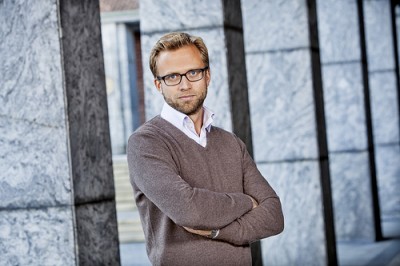NEWS ANALYSIS: Norway’s government faces a huge challenge as it tries to juggle the interests of the country’s large oil and gas industry and the need to cut carbon emissions blamed for climate change. As Norwegians returned to work Tuesday after a long Easter holiday, they were likely to meet new vows from politicians who claim they won’t simply try to buy their way out of meeting climate goals at home.

There’s reason to be skeptical about such promises, which have been made by all of Norway’s various governments over the past 30 years. And with the spring skiing during Easter better than expected, industry leaders and politicians may overlook nagging fears that climate change can leave Norway with little snow for skiing 30 years from now.
In the two months since the current Conservatives-led government announced its latest “climate commitment,” its politicians have been busy defending the substance behind their promises. Chief among them is Nikolai Astrup of the Conservative Party, who serves as party spokesman on climate issues and therefore defends the government.

Astrup, a Member of Parliament and member of its energy and environmental committee, claims Norway will impose “radical” emissions cuts within the country, both on industry and the population in general. He told newspaper Dagens Næringsliv (DN) recently that Norway will maintain pressure on its transport, agricultural and construction industries (which together generate around half of Norway’s relatively high level of emissions) and continue to impose its CO2 avgift (a form of carbon tax) on the petroleum industry. The government, he said, will also continue to offer “positive incentives” for technological development that can help industry cut its emissions.
“We won’t simply buy our way out of climate commitments,” Astrup claimed. He strongly contested assessments from climate researchers, environmental organizations and some opposition politicians that the government will do exactly that, in its new agreement to “contribute” to the EU’s own goals for cutting emissions.
“No, an agreement with the EU will give us a goal for cuts in the (transport, agricultural and construction) sectors,” Astrup told DN.
More delays loom
He conceded, though, that the actual size of the cuts won’t emerge for another few years, after the EU has negotiated its own cuts in 2016 and then after Norway has negotiated with the EU. But if the EU spreads the burden of emissions cuts in accordance with gross national product per capita, he said Norway will probably end up needing to cut emissions by 40 percent within transport, agriculture and construction alone.
Given the pace of new road-building, the powerful farming lobby in Norway and demand for housing, questions arise over how and whether those industries will accept such large cuts. Meanwhile, state politicians both in the government and the opposition in Parliament look likely to maintain the state-owned coal mining operations on Svalbard. In an ongoing paradox, Norwegian officials continue to urge curtailment of coal industry activity abroad, while justifying it at home even in the environmentally sensitive Arctic for “strategic” reasons. As with the jobs created by Norway’s oil and gas activity offshore and oil service industry on the mainland, the jobs generated by Svalbard’s coal mines are needed in order to support Norwegian population and presence in the Arctic at a time of Russian aggression.

The question remains, though, over how strict the EU will be in forcing Norway to make cuts at home instead of simply paying other countries to make cuts elsewhere. Environmental Minister Tine Sundtoft, who also comes from the Conservatives, recently told newspaper Nationen that only around 2-3 percent of the cuts are likely to be allowed abroad. It was difficult to substantiate that figure, but Astrup claimed it proves his premise that Norway will indeed need to make the vast majority of its emission cut commitments within Norway’s borders.
Norway has so far failed to meet its current climate goal of cutting 1990-level emissions by 30 percent by 2020. Astrup admitted the goal won’t be met, mostly blaming the previous government led by the Labour Party, which traditionally supports the oil industry because of the jobs its creates. Astrup insists the conservative government’s new climate goals are credible, though, “because it will be extremely binding for Norway to enter into a legal agreement with the EU on emission cuts.” Astrup also told DN that “there’s no doubt we have more ambitious (climate) policies than the (former left-center) government, and that emissions will go down.”
Environmental Minister Sundtoft has been claiming the same thing for months, writing in newspaper Dagsavisen this winter that “our goal is to make Norway a low-emissions society.” Her government’s decision to tie itself to the “EU’s climate regime” means that Norway, like other EU countries, will be assigned specific requirements for cutting its own emissions.
“I can assure everyone that Norway will take on its part of the job to cut emissions,” Sundtoft wrote. “We won’t let the EU do the job for us.” The EU will only set the standard, she added, leaving Norway to meet it by, among other things, developing renewable energy sources and new technology to lower emissions, renewing efforts to capture and store carbon emissions, making shipping more environmental friendly and reducing other transport emissions.
Sundtolft is the same minister, however, who readily accepted new evidence that the Arctic ice edge had moved farther north, allowing her government to open up new areas of the Arctic to oil and gas exploration. She admitted that the ice edge movement is a result of climate change, yet she was part of allowing more of the activity that’s blamed for climate change.
‘All talk, no action’
It’s that sort of political logic that gives rise to the skeptics who see a history of “all talk and no action” on emission cuts over the years. Social economist Erling M Kravik wrote recently in newspaper Aftenposten late last month that Norway “should have the money, knowledge and political will to be a good role model in the fight against climate change.” Instead, he noted, Norwegian politicians and even its own environmental movement have failed to cut emissions, and they’re due to rise even beyond last year’s increase. Others, including Spire leader Mari Gjengedal, have called Norway’s oil policies “opportunistic” and suggested that Norwegian politicians both on the left and the right should be ashamed of themselves.
They can be reminded of that at least one day every month, when a vocal group of retirees stand outside the Parliament in Oslo and protest politicians’ failure to reduce emissions. News bureau NTB reported on Tuesday that they have banded together under the banner of Besteforeldrenes Klimaasksjon (Grandparents’ Climate Action), and are agitating for new and better climate policies across party lines. They’re fighting everything from Statoil’s controversial tar sands operations in Canada to preserving open areas, and they’re not alone. Climate issues are among the hot topics heading into local elections this autumn, with recent surveys showing that climate issues top constituents’ concerns.
“Environmental problems give rise to conflicts and suffering,” Harold Leffertstra, a 69-year-old retired employee of the state’s own environmental protection agency (Miljødirectoratet) who was among those rallying outside Parliament, told NTB. He noted that he won’t be around 30 years from now, when climate change is expected to have done more damage, but he wants to prod politicians into more action. “In the time I have left, I want to give something back.”
newsinenglish.no/Nina Berglund

